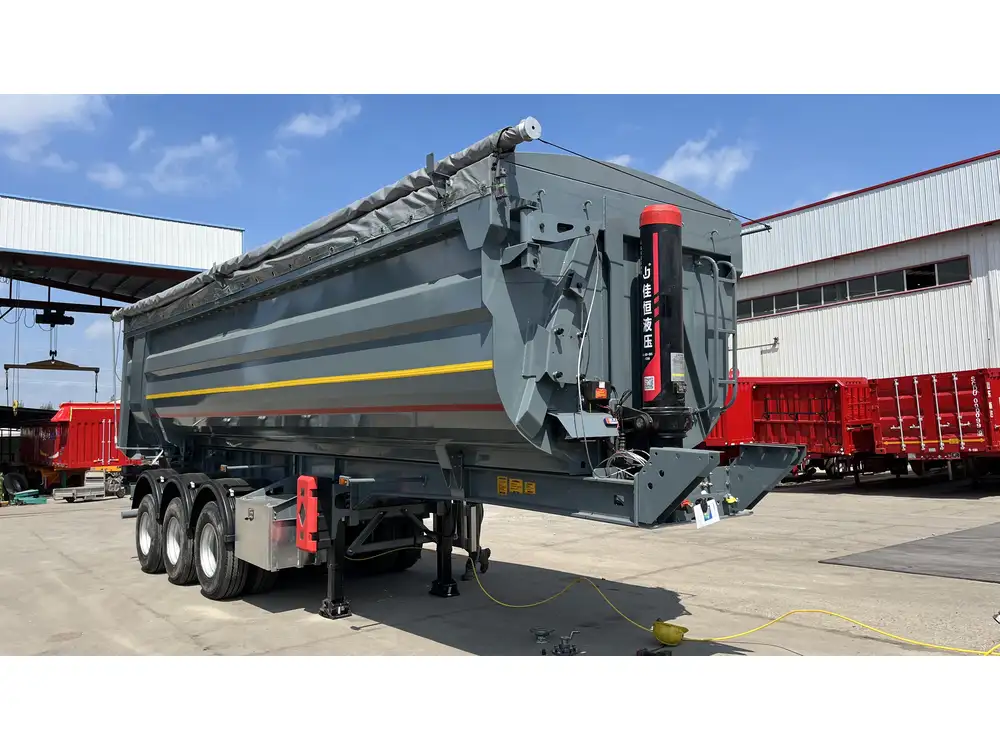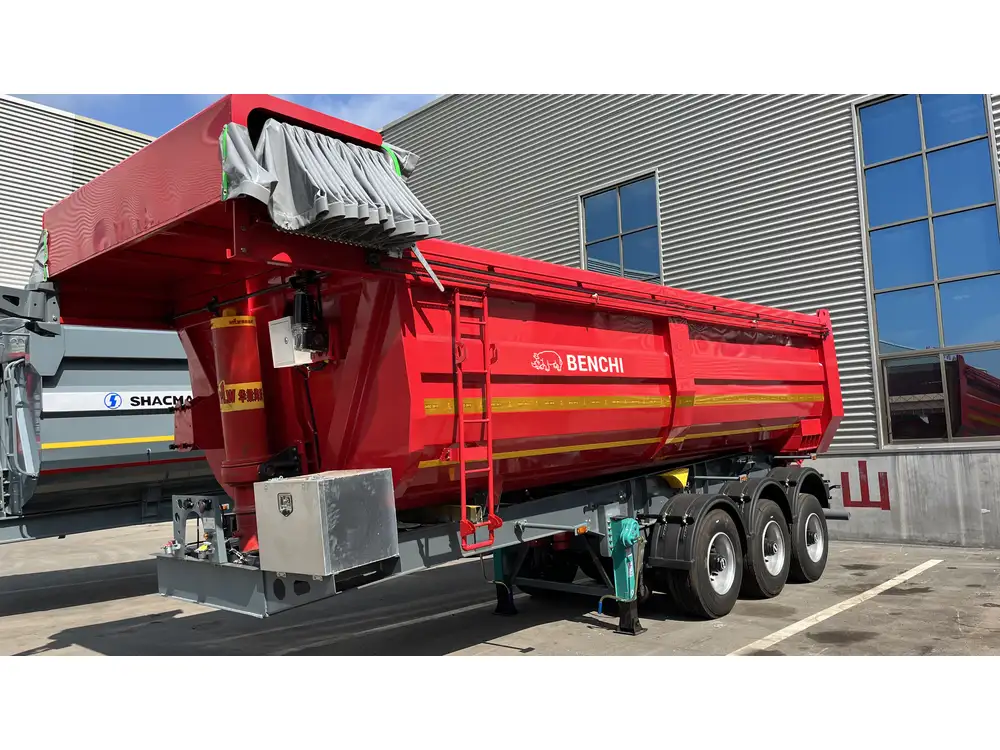When it comes to heavy-duty transportation, choosing the right trailer for the job is essential. Not all trailers are created equal, and understanding the differences in capacity, construction, and intended use can save businesses time, money, and potential headaches. In this article, we examine the capabilities of maxi trailers versus flatbed trailers, focusing on weight capacity, structural integrity, versatility, and other critical factors that influence decision-making.
Understanding Trailer Types: Maxi Trailers vs. Flatbed Trailers
What is a Maxi Trailer?
Maxi trailers, also known as maxitrucks, are specialized vehicles capable of carrying heavier loads than standard trailers. They are often designed with extra axles that distribute weight more efficiently and enhance stability. Typically used for long-distance hauling, maxi trailers can support various cargo types, such as construction materials, machinery, and bulk items.

What is a Flatbed Trailer?
Flatbed trailers are characterized by their open design and lack of sides or a roof. This design allows for easy loading and unloading of heavy or bulky items. Flatbeds are versatile solutions used in various sectors, including agriculture, transportation, and logistics. They accommodate diverse loads ranging from vehicles to construction equipment, but their weight limitations are often dictated by the trailer’s construction and axle configuration.
Weight Capacity: The Heart of the Matter
Structural Differences

Axle Configuration
| Trailer Type | Typical Axles | Average Weight Capacity |
|---|---|---|
| Maxi Trailer | 3 to 6 | Up to 50 tons |
| Flatbed Trailer | 2 to 4 | Up to 28 tons |
Maxi trailers generally come with more axles, enabling them to carry greater weight more safely. The distribution of weight across a larger number of axles minimizes the risk of axle overload, which is particularly crucial when transporting heavy loads over long distances.
Construction Material
When comparing weight limits, it’s also important to consider the materials used in the construction of both trailer types. Maxi trailers are often built with stronger materials designed to withstand heavy cargo, while flatbed trailers prioritize versatility and cost-effectiveness. The result is that maxi trailers can typically manage heavier weights than flatbed variants.
Regulations and Compliance
Another significant factor is local and national regulations concerning trailer capacities. Governments often impose strict rules regarding weight limits on public roads. In many regions, a properly configured maxi trailer can legally transport more weight than a standard flatbed, provided it meets regulatory standards.

Versatility and Applications
Load Types
Understanding the load type heavily influences the choice between a maxi trailer and a flatbed trailer:
- Heavy Machinery: Maxi trailers are often preferred due to their higher load capacities and stability.
- Building Materials: Flatbed trailers excel because they offer ease of loading and unloading using cranes or forklifts.
- Vehicles: While flatbeds can transport cars and smaller trucks, maxi trailers are more suited for larger or heavier vehicles.
| Load Type | Best Panel Type | Reason |
|---|---|---|
| Heavy Machinery | Maxi Trailer | Designed for heavy loads |
| Construction Material | Flatbed Trailer | Easier access for loading/unloading |
| Vehicles | Flatbed Trailer | Versatile, provides easy access |
Ease of Loading and Unloading
Flatbed trailers are renowned for their accessibility. Their open design allows for straightforward loading and unloading using cranes, dollies, or forklifts, making them ideal for various industries. For instance, transporting large construction modules or heavy equipment is simpler with flatbeds due to their design.
Conversely, while maxi trailers possess capabilities for heavier loads, their loading and unloading methods may be more complex, often requiring specialized equipment such as ramps or specific winching systems to ensure that cargo is safely loaded and unloaded. This complexity can sometimes lead to increased turnaround times.

Cost Efficiency: Analyzing the Total Cost of Ownership
Initial Investment and Maintenance
Purchase Price:
Generally, maxi trailers command a higher initial price tag than flatbed trailers, primarily due to their added features and reinforced construction. However, given their increased payload capabilities, businesses may optimize revenue and cost-per-load due to reduced trips required for heavy freight.
Maintenance Costs:
Both trailer types require regular maintenance, but the more complex mechanisms of maxi trailers may lead to higher long-term maintenance costs. Business operators should factor in servicing, axle checks, and tire health into their budget forecasts.
| Cost Factor | Maxi Trailer | Flatbed Trailer |
|---|---|---|
| Initial Purchase | Higher | Lower |
| Maintenance Costs | Potentially higher | Generally lower |
| Lifespan | Longer with proper care | Standard lifespan |
Fuel Efficiency
While heavier loads can improve efficiency by maximizing payloads, they also impact fuel consumption. Consequently, operators must consider fuel efficiency when determining costs. Maxi trailers, designed for heavier loads, may consume more fuel than their flatbed counterparts, particularly when hauling maximum capacities. The difference can significantly influence operating costs over time.

Safety Considerations: Stability, Precautions, and Compliance
Enhanced Stability Features
Maxi trailers benefit from enhanced stability, particularly when handling vast cargo loads. With multiple axles, these trailers distribute weight evenly. However, operating a heavy load necessitates strict adherence to safety protocols to prevent accidents:
- Conduct routine inspections of brakes and tire pressures.
- Ensure loads are securely strapped and balanced.
- Train operators on handling complexities involved with heavy trailers.
Regulatory Compliance
Every trailer must comply with local laws governing dimensions, weights, and safety. Overloading any trailer increases the risk of accidents, poses fines, and could result in voided insurance policies. Therefore, it’s crucial to consult local transportation authorities when deciding between a maxi trailer and a flatbed, ensuring the choice aligns with legal requirements.

Final Thoughts: Which Trailer Should You Choose?
Deciding whether a maxi trailer can handle more weight than a flatbed isn’t simply a matter of figures but rather an intricate balance of various factors — from load types and maintenance costs to safety and regulatory compliance.
If your primary need is to transport heavy machinery or materials efficiently, the maxi trailer is the clear winner. Its superior weight capacity and structural design make it an apt choice for heavy-duty tasks.
If versatility, ease of loading/unloading, and lower initial costs are priorities, a flatbed trailer may emerge as the optimal solution. They present flexibility for transporting distinct items and typically cost less to purchase and maintain.
Ultimately, choosing between a maxi trailer and a flatbed should consider specific business needs, load types, compliance issues, and cost factors. Investing the time in understanding the unique requirements of your transporting operations will yield efficient and economical transportation solutions for your logistics needs.
Navigating the complexities of trailer selection is not merely about maximizing payload but also ensuring safety, compliance, and operational efficiency — the true measures of success in the transport sector. In an industry where precision and performance reign supreme, making an informed choice is the hallmark of effective logistics management.



